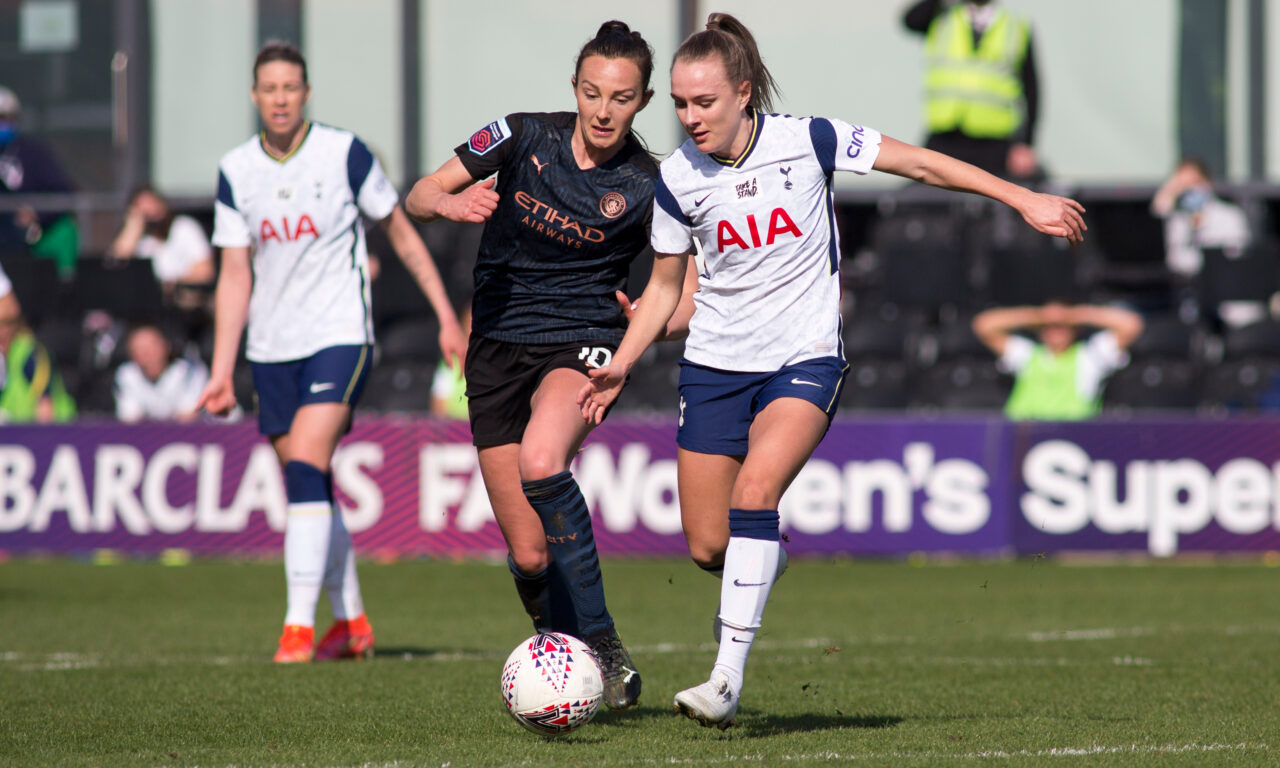Three reasons why now is the perfect time to sponsor women’s sport

It is now an undeniable fact that women’s football, and women’s sports in general, is the fastest-growing segment of the sports market. This is no longer merely an anecdote told by advocates, no longer merely a sentiment held by superfans. With record attendance figures and massive growth in broadcasting rights, the data supports that brands investing in women’s football now will reap the rewards of early adopters.
For brands, the time to invest in women’s sports is now. Here’s why:
1 Engagement
Whilst the audience for women's sports remains smaller than that of the men's game, data from the Sports Innovation Lab (SIL) shows that they are far more engaged. One possible reason for this high level of engagement is that, for the last decade, fans of women’s sports have been forced to actively hunt for unstable streams, follow their favourite players on social media for updates, and track down limited merchandise to display their fandom proudly.
Women’s football supporters are more likely to engage with, and purchase from, sponsors who provide and support content in a tangible and authentic way.
The SIL’s report introduces the “Fluid Fan” model measuring, tracking, and categorizing fan behaviour rather than just basic audience demographics. When the SIL tracked behaviour such as co-watching, learning, owning/buying, and access, it found that fans of women’s sports proportionally exhibited more of these behaviours than fans of men’s sports.
2 Price
Brands have the unique opportunity to get in on the ground floor of what is essentially the hottest startup in global sport. Record-breaking attendance figures and massive upticks in digital and traditional broadcasting viewership are only expected to grow even more with the FIFA Women’s World Cup 2023 on the horizon.
Women’s football broadcast rights cost roughly 2% of what they do for the men’s game, despite viewership hovering around 20% of the men’s football audience in the UK. This imbalance caused FIFA to reject a recent round of low-ball bids for broadcasting rights for the Women’s World Cup 2023. Sponsors who have already invested will see the value of their investment increase by multitudes when FIFA accepts a fair bid that more closely aligns with the audience figures.
In addition to increased viewership, Nielsen Sports estimates there was a 146% increase in unbundled sponsorship investment in women’s sports year over year in 2022. This growth, coupled with the rising but relatively low-cost of sponsoring women’s sports, makes it an especially valuable time to capitalize on the huge return brands are already realizing in sponsoring women’s sports. The unbundling of sponsorship opportunities not only increases the opportunities to sponsor women’s sports, but allows brands to create a strategy specific to the women’s game which can more effectively reach consumers that weren’t previously reached through sponsorship in men’s sport.
3 Impact
Like an early investor of a startup, early sponsors of women’s football can have a great impact on the future popularity and reach of the sport. Instead of simply being one of many brands displaying a logo, sponsors of women’s sports have an opportunity to shape the future of the event. Such an influence allows sponsors to work with the governing body to prioritise areas where there is a cross-over between business objectives and the objectives of the sport. One such example is Barclay’s focus on younger audiences.
In 2019, Barclays announced a deal to become the first title sponsor of the FA Women’s Super League. As the largest-ever investment in women’s sport by a UK brand, the partnership included an initiative that created opportunities for young girls to take part in football at school through their sponsorship of the FA Girls Football School Partnerships.
By investing in the professional level of women’s football, Barclays is hoping to increase the exposure of the game, attract further investment and talent, which will lead to a high-quality product on the pitch resulting in a virtuous circle.
In this way, brands are able to create and sustain their own market, ensuring they contribute to the growth of the game as well as the growth of their returns on investment.
Final thoughts
The popularity of women’s football has been on the rise and the time to invest in women’s sports was yesterday. With highly engaged fans and an opportunity to create a virtuous circle of investment, growth, and influence, it is now up to brands to take advantage of the double- and triple-digit growth numbers women’s sports leagues, teams, and athletes were able to achieve in recent years. And with a strategy specific to fans of women’s sports, the opportunities are limitless.









